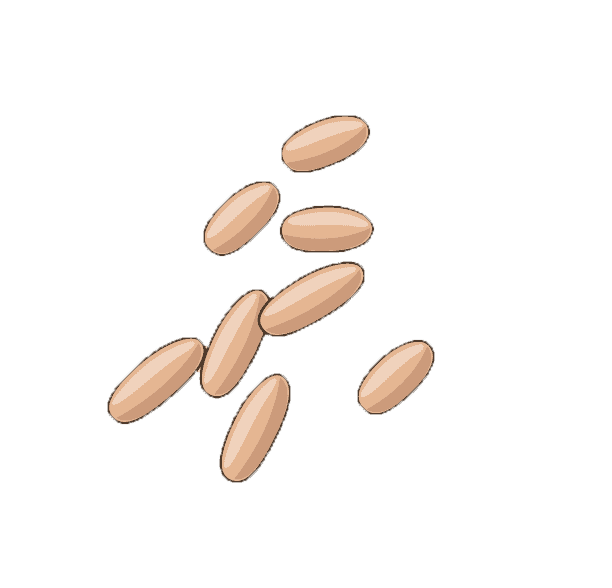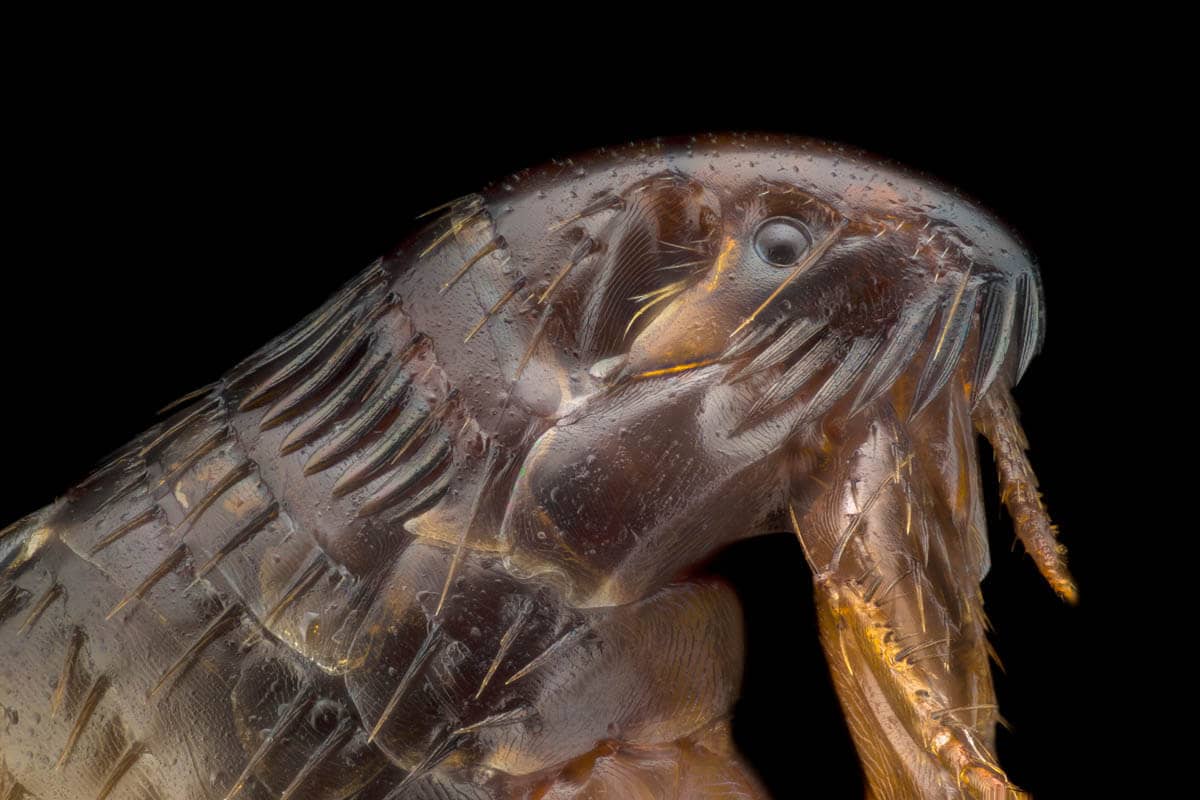When we think about fleas, most of us picture the adult flea; however, there are four stages to the flea life cycle, and the adult cat flea only makes up 5% of the entire flea population. If we miss just one of those stages, it will be impossible to eliminate fleas.
Eggs (50%):

Adult fleas lay between 20-50 white, smooth, round or oval eggs. The smooth surface means that eggs easily fall off the cat and into the environment. Eggs hatch into larvae anywhere between 2-14 days depending on environmental conditions such as temperature and humidity.
Larvae (35%):
Newly hatched larvae are 2 mm in length, white and maggot-like. They feed on adult flea feces which is mostly composed of dried blood from the cat, flea eggs and when available, tapeworm eggs (which is how fleas become infected with tapeworm and spread the parasite to cats).
Saliva produced by the flea during a meal irritates the skin of the cat, which causes it to scratch, this dislodges eggs and flea feces into the near environment, providing the larvae with their much-needed food. While larvae live close to their food source of eggs and flea feces, they are sensitive to heat and light and will seek out dark areas such as creases in bedding or in cracks in skirting boards and floors.
Pupae:

After a week, flea larvae spin a sticky cocoon that is covered in dirt and dust particles, which enables it to remain camouflaged in the environment. Inside the pupae, larvae develop into a flea, which takes 2-3 weeks. The flea can remain in the pupae for months until environmental conditions are right. During its time in the cocoon, the flea is protected from cold, dryness and insecticides.
Under the right conditions, the adult flea emerges from its protective cocoon; however, if conditions aren’t right, the flea can remain within the cocoon in a dormant state for as long as 12 months. Heat, vibration and carbon dioxide trigger from a potential host triggers the flea to emerge, and from there it must quickly jump onto the host for its first blood meal.
Pupae are the most resistant flea development stage; they are resistant to heat, desiccation and require no food.
Adult flea (5%):

Adult fleas are 1-3 mm long, and mahogany brown. They have powerful hind legs which enable them to jump onto a host. The narrow body makes it easy for the flea to navigate its way through the cat’s coat. An adult flea will never deliberately leave its preferred host.
The adult flea must have a blood meal before she can mate and produce eggs and feeding occurs within five minutes of landing on the host. Specialised mouthparts penetrate the skin, specialised saliva contains anticoagulants to slow down blood clotting. The flea consumes 15 times its body weight in blood, per day, most of which pass out of the flea undigested which provides flea larvae with their food source.
Adult fleas spend their entire time on the cat and live for approximately 100-120 days.
How do I know if my cat has fleas?
It is not always easy to find fleas on your cat, particularly if the cat is a darker colour. Even indoor cats can get fleas either when one hitches a ride on a pet or human or if dormant pupae hatch, such as when a family moves into a new house. Symptoms of fleas can vary depending on the sensitivity of the cat to flea saliva as well as the number of fleas on the cat and may include:
- Itching
- Excessive grooming
- Flea feces (dirt) in the coat, particularly along the cat’s back. If you are unsure, stand your cat over a piece of white paper, ruff the fur to dislodge flea feces, and then spray the paper with water, if any flea feces have dropped onto the paper, water will cause the blood to form a red ring on the paper
- Flea eggs and feces have the appearance of salt and pepper and can be found in areas your cat frequents such as bedding
- Cats who suffer from flea allergy dermatitis develop dry, crusty patches, around the back and the neck, excessive scratching, especially around the neck can lead to open sores
- Heavy infestations can lead to anemia; symptoms include pale gums and lethargy
How to treat cat fleas
Both the cat and the home must be treated at the same time to break the cycle. Veterinary treatments are safer and more effective than products available in supermarkets. Most are topical (applied to the back of the neck) or tablets.
At the same time, treat the remaining flea population off the cat with a flea bomb (fogger) or call a pest control company. People and pets must be out of the house when a flea bomb is used and check that it is safe to use in homes with pets.
Vacuum daily, and pay attention to nooks and crannies along skirting boards, door rollers and under furniture. Empty the vacuum bag or canister each time you vacuum.
Wash your cat’s bedding weekly in hot water and hang outside in the sun.


